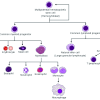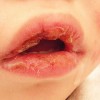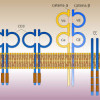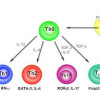Abstract
OBJECTIVE: To assess the efficacy of current Mycobacterium tuberculosis control measures.
DESIGN: Voluntary questionnaire to members of the Society for Healthcare Epidemiology of America.
RESULTS: Healthcare worker (HCW) tuberculin skin-test (TST) conversion rates were significantly higher in larger hospitals (or = 437 beds) (0.9% versus 0.6%; P < 0.05), or in hospitals reporting > or = 6 TB patients in 1992 (1.2% versus 0.6%; P < 0.05). Among larger hospitals or those hospitals surveyed reporting > or = 6 TB patients, those without at least three of the four criteria suggested in the 1990 Centers for Disease Control and Prevention (CDC) TB guidelines for acid-fast bacilli (AFB) isolation (specifically, a single-patient room; negative pressure; and air exhausted directly outside) had significantly higher annual TST conversion rates than those with these criteria (1.8% versus 0.6%; P < 0.05). Respiratory therapist or bronchoscopist TST conversion rates were significantly lower in hospitals compliant with the exhaust criteria (1.2% versus 2.8%; P < 0.05). Regardless of hospital characteristic, HCW TST conversion rates did not differ between hospitals in which HCWs used surgical masks or used disposable particulate respirators.
CONCLUSION: Among larger hospitals or hospitals reporting or = 6 TB patients per year, failure to comply with the 1990 CDC TB recommendations for AFB isolation room guidelines was associated with higher HCW TST conversion rates.… Read more





